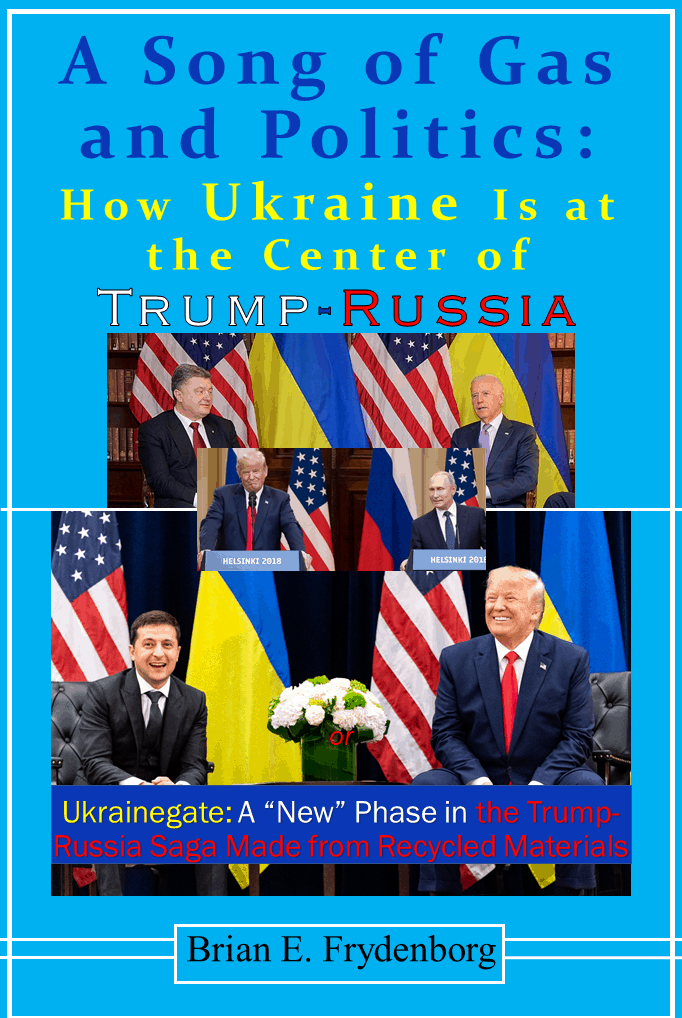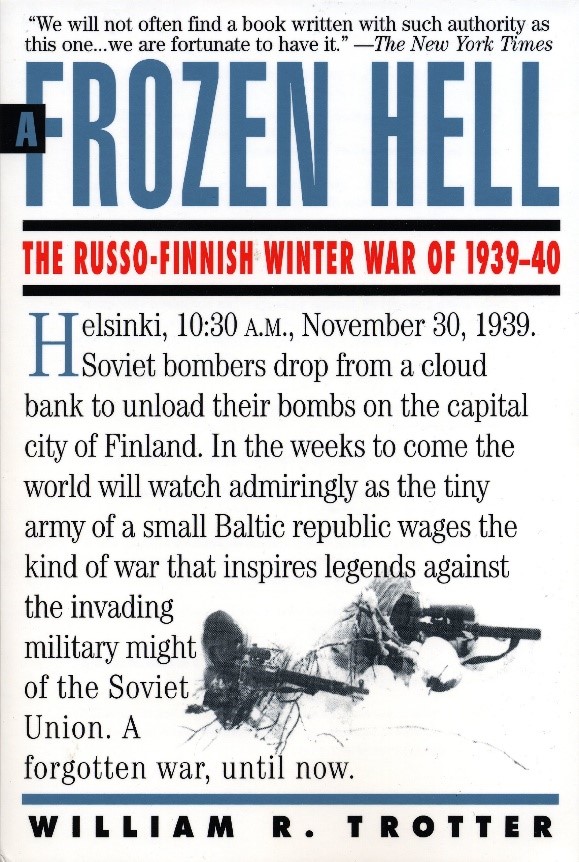War crimes, crimes against humanity, ethnic cleansing, and mass killings carried out by their eastern neighbor are nothing new for Ukrainians; while not comprehensive, this brief outline focuses on what is most currently relevant from a series of horrors visited upon Ukraine, Putin’s latest round only continuing a long tradition of tsarist/Soviet oppression, brutality, and/or mass murder in Ukraine going back centuries.
(Russian/Русский перевод) By Brian E. Frydenborg, May 25, 2022 (Twitter @bfry1981; LinkedIn, Facebook); this is one of a series of articles excerpted and/or adapted from Brian’s May 23 Small Wars Journal article, Bungling the Prewar and First Moves in Finland 1939 and Ukraine 2022: A Comedy of Errors for Stalin’s Soviet Union and Putin’s Russia, Respectively, his deep-dive analysis on the parallels between the 1939-1940 Soviet-Finnish Winter War that was inspired by his reading the beginning of one of the definitive English accounts of this war—William Trotter’s A Frozen Hell: The Russo-Finnish Winter War of 1939-40 (Algonquin Books of Chapel Hill, 1991, 283 pages). This conflict is especially timely as Finland seeks to join NATO in light of Russia’s recent imperialist aggression.
Other articles excerpted and/or adapted from the May 23 Small Wars Journal article:
- May 23: A Terrifying Comparison Between Putin and Stalin
- May 31: “Banderites”: What Russia Really Means When It Calls Ukraine Nazi and Fascist
- June 2: How Delusions of Phantom Fascists Duped Stalin in 1939 and Putin in 2022
- June 5: Moscow’s 1939 Finland Hubris Repeats Itself in Ukraine in 2022
- June 7: A Flurry of Telling Parallels Between the 1939-1940 Soviet-Finnish Winter War and Russia’s 2022 Ukraine War

SILVER SPRING—In trying other times to convey the emotion and time-span of the struggles highlighted herein, in the past I have used a particular excerpt from a particular poem and will reuse it here because it is terribly apt and revealing, especially when noting the date:
Great Russia: [i.e., Russia]
Do you know with whom you are speaking, or have you forgotten? I am Russia, after all: do you ignore me?
Little Russia: [i.e., Ukraine]
I know that you are Russia; that is my name as well.
Why do you intimidate me? I myself am trying to put on a brave face.
I did not submit to you but to your sovereign,
Under whose auspices you were born of your ancestors.
Do not think that you are my master:
Your sovereign and mine is our common ruler.
A Conversation Between Great Russia and Little Russia, 1762 by Semen Divovych, Ukrainian Cossack scribe and poet
As the above quote demonstrates, for centuries, Ukrainians have fought for their freedom and to preserve their identity against an expansionist, imperialist, colonialist Russia (something I have discussed at length before). Below is a brief (not by any means comprehensive) history of Russian and Soviet mass atrocities carried out in what are now the modern borders of Ukraine.
Imperial Russia had control over Ukraine’s east for far a longer time than its west (part of that not even coming under Russian control until the mid-twentieth century), and the tsarist era saw systematic top-down suppression of Ukrainian as a language and identity (some Ukrainians even adopting Russian to suffer less discrimination) as well as suppression of the Muslim Crimean Tatars that was so bad that a large majority fled Crimea, leaving the Tatars who remained a minority in the face of colonialist settling of Russians and others in Crimea and other areas within Ukraine’s current borders (especially the Donbas), just some of the tsarist policies collectively known as “Russification.”
A free Ukrainian state finally emerged from the collapse of Imperial Russia at the end of World War I, only to be caught up in a number of conflicts, including the Russian Civil War; when the fighting was over after years of killing in Ukraine, Ukraine’s brief independence had been snuffed out by the time it was integrated as a Soviet Socialist Republic (SSR) into the Union of Soviet Socialist Republics (USSR), or Soviet Union, in 1922 (and far from willingly).
The Soviet era would see even more dramatic demographic shifts.
A decade after being forcibly integrated into the USSR, in the face of both maintaining Ukrainian culture and Ukrainian resistance to Moscow’s policy of collectivization of farming, Stalin took what was a terrible situation with a regional famine and specifically directed and aggravated that famine towards Ukraine, killing millions of Ukrainians in 1932-1933 through starvation and its accompanying diseases in the man-made genocidal disaster that has come to be known as the Holodomor (the most detailed estimate approximates 3.9 million dead). During this genocidal famine, Russians were resettled into some areas where Ukrainians had been starved to death or sent off to gulags, particularly in the east and south, so that the land could still be worked and yield harvests. As the Donbas area in particular was a center of major industrialization, Russian and other Soviet migration to that region was considerable in this period.
Understandably, when German armies came rolling through Ukraine in 1941, many Ukrainians with little love for Stalin, Russia, or the Soviets and their Union saw an opportunity in a classic “the enemy of my enemy is my friend” situation. But the Nazis were uninterested in Ukrainian nationalism, so, not long after their invasion of the Soviet Union, they turned on their Ukrainian allies after some of them—Stepan Bandera’s OUN-B—proclaimed an independent Ukrainian state. Bandera some of his Ukrainian nationalists were caught up in the crackdown, but some of the rest fought the Nazi invaders, even as their old enemies, the Soviets, eventually came back during their great counteroffensive against Hitler’s armies.
Thus, the OUN-B fought the Nazis and Soviets at once (until the former were driven out), eventually forming alongside others the Ukrainian Insurgent Army (UPA) and fighting a bitter guerilla war against the Soviets that lasted until 1954, the same year Khrushchev symbolically gifted Crimea from the Russian Soviet Federative Socialist Republic (RSFSR) to the Ukrainian Soviet Socialist Republic, though some tiny numbers of insurgents continued resistance for years after. Not even including the fighting with the Nazis, some 150,000 Ukrainians—insurgents and civilians—were killed in combat by the Soviet counterinsurgency campaign against—as the Soviets blanketly called all insurgents—the “Banderites,” after Bandera (more on that by me here).
There was so much killing and depopulation during World War II by the Nazis and Soviets in Ukraine that the people of the Ukrainian SSR suffered one of the highest casualty totals of the war both in proportionate terms and absolutely (about 6.85 million dead, some 16.3% of the total population in the relatively recent accounting of one Russian historian). Additionally, the Germans deported some 2.4 million people from within Ukraine to work in Germany as forced slave labor (of whom, by some estimates, 400,000-450,000 died from the brutal conditions). Then, when the Soviets retook Ukraine and other Soviet territory occupied by Hitler’s forces, large parts of populations that had collaborators in their midst or were merely suspected by paranoid authorities of having collaborated or harbored collaborators (or even just because they were seen as troublesome “foreign” elements) were deported to Soviet Central Asia or Siberia under appalling conditions that saw many of those deportees perish. The deported included all of the Crimean Tatars (estimates range, but quite roughly 200,000) in just a few days in 1944 on the grounds that they had, en masse, collaborated with the Nazis. In reality, only a small percentage actually had, and the Soviet government even admitted in 1967 that the accusations were false (I did not even realize I was writing this section on the anniversary of the beginning of this genocidal deportation, May 18). Many ethnic Ukrainians were also deported by the Soviets from Ukraine (over 200,000 from western Ukraine alone, where UPA was most popular).
Few Russians are likely aware of the supremely sick irony of Putin pushing an expansionist, imperialist, colonialist war on Ukraine to reintegrate ethnic Russian populations back into Russia considering those populations mainly came to be in Ukraine’s south and east because tsarist and/or Soviet-engineered oppression, genocide, famine, mass killing, and mass deportations of Ukrainians and Tatars occurred alongside colonialist population transfers of Russians into Ukraine, settled often on the literal blood and bones of the previous inhabitants.
Apparently true to its horrific legacy, Russian in this the current war has been accused by Ukraine of forcibly deporting some 1.2 million Ukrainians, including well over 200,000 children, to Russia, actions that can only bring back nightmare memories of the past horrors described above (on May 23, Ukraine updated the accusation to a total of 1.4 million Ukrainians, including over 240,000 children).
Thus, Ukrainians’ resistance to Russian imperialism, whether in the past or today, is not inspired by Western support or American manipulation into becoming “proxies” of the U.S., but a deep, lived experience passed on from generation to generation of being at the receiving end of a long history of atrocities that, sadly, in part defines what it means to be Ukrainian.
See all Brian’s Ukraine coverage here
© 2022 Brian E. Frydenborg all rights reserved, permission required for republication, attributed quotations welcome
Also see my eBook, A Song of Gas and Politics: How Ukraine Is at the Center of Trump-Russia, or, Ukrainegate: A “New” Phase in the Trump-Russia Saga Made from Recycled Materials, available for Amazon Kindle and Barnes & Noble Nook (preview here), and be sure to check out Brian’s new podcast!

If you appreciate Brian’s unique content, you can support him and his work by donating here
Feel free to share and repost this article on LinkedIn, Facebook, and Twitter. If you think your site or another would be a good place for this or would like to have Brian generate content for you, your site, or your organization, please do not hesitate to reach out to him!
